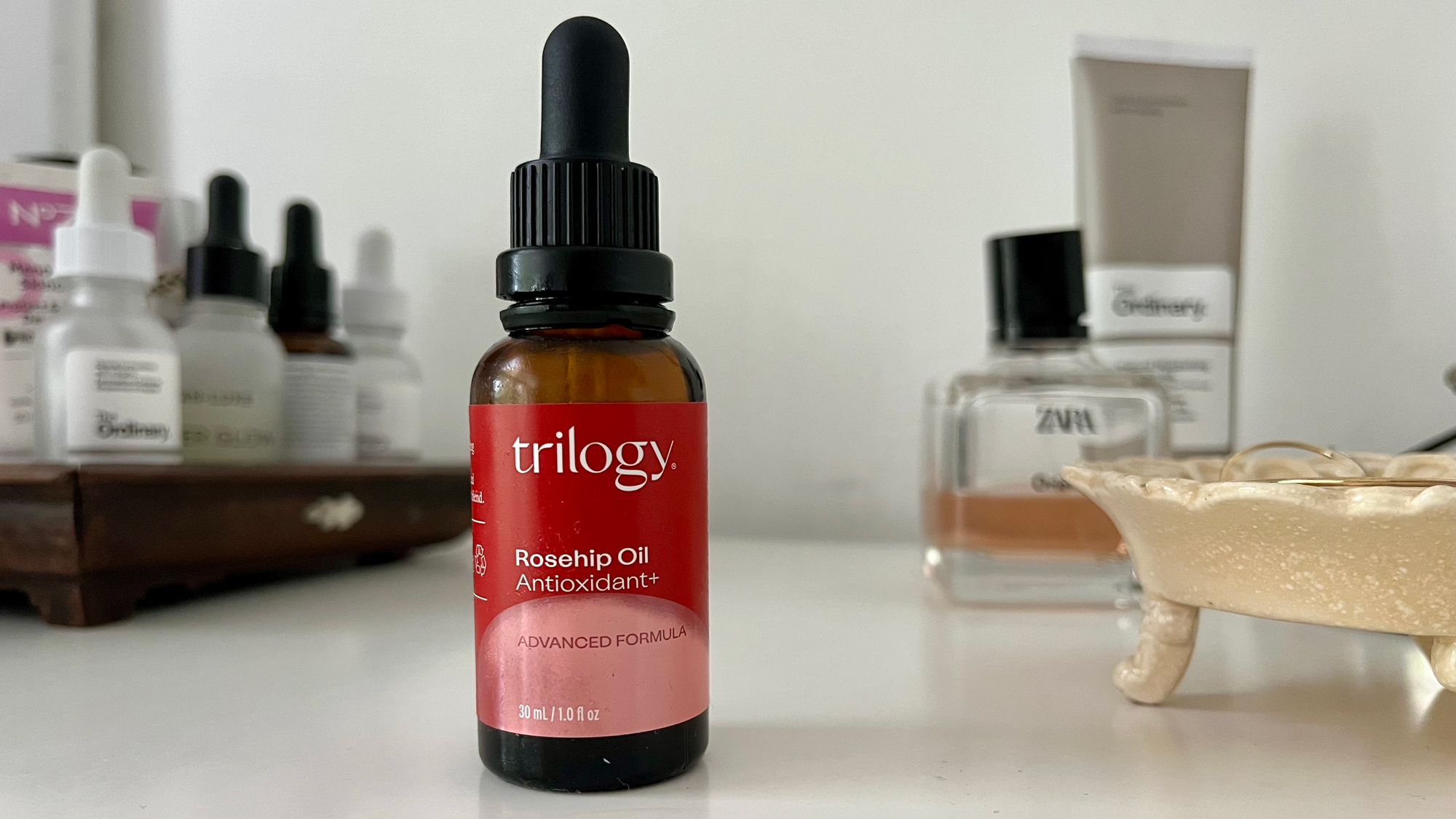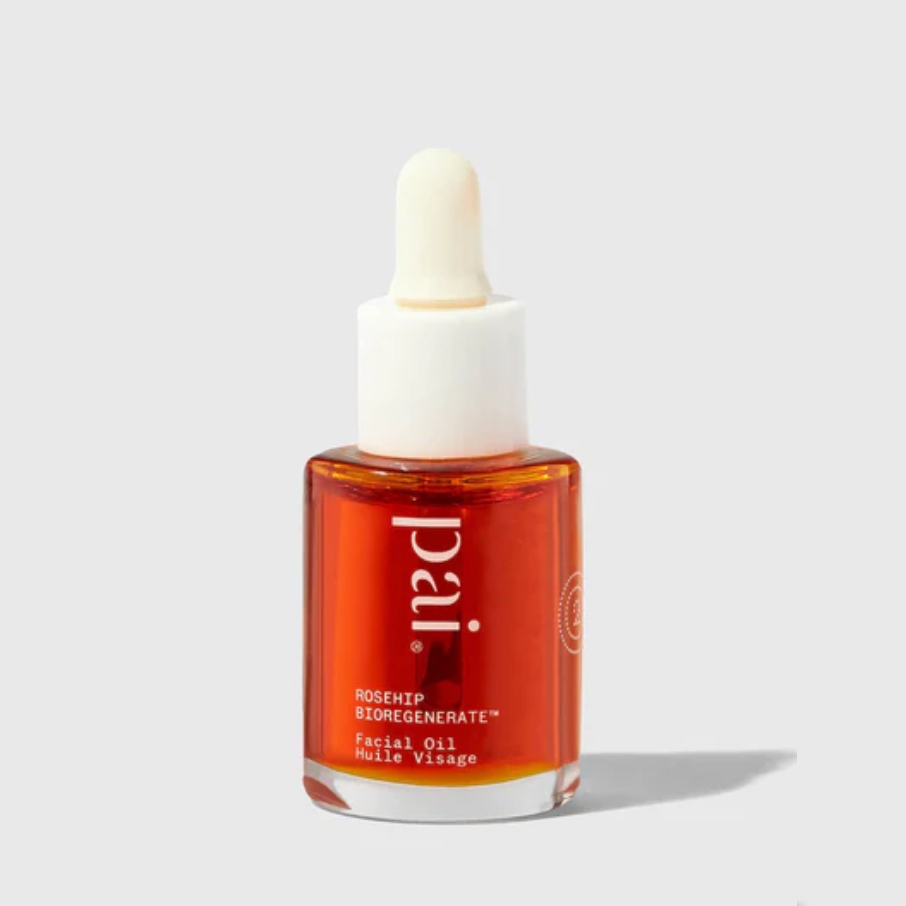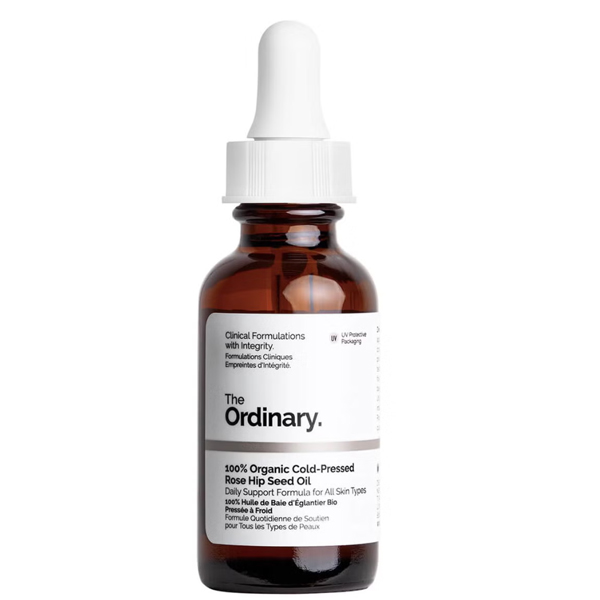'My fine lines have absolutely reduced' - woman&home editor shares striking results of using rosehip oil on her face
Rosehip oil is a staple skincare product for the Princess of Wales too


Rosehip oil for your face isn't new, people have been using it on their skin for centuries. And its longevity – not to mention the fact the Princess of Wales is reportedly a fan – says a lot for how good a skincare ingredient it is.
It's widely known that rosehip oil is a staple in Kate Middleton's makeup and skincare routine (and her mum Carole's too). Keen to try it for ourselves, woman&home's digital content director Lucy Searle has been using it for a couple of months, and has already seen a noticeable difference in her skin's appearance.
"I tend to use pared-back products for my face because my skin is easily irritated. This means I've used Liz Earle for cleansing and The Ordinary for serums and moisturisers fairly successfully for years. Recently, I ran out of night cream but I had picked up some rosehip oil from our beauty department the week before so I thought I'd try it.
"I actually didn't know what it could do for my skin, but I did know I needed a moisturiser that night, and didn't have time to shop for any of my usual reliable buys. I'm now at the bottom of my first 30ml bottle - it's probably lasted a couple of months. In that time, I have noticed that my skin has gained a definite, discernible glow, and that my fine lines have absolutely reduced."
What is rosehip oil?
So what exactly is rosehip oil? Also known as rosehip seed oil, it comes from the seeds of the pod just underneath the flowers of the rosa canina rose bushes. It can be found throughout Europe, but it’s most commonly harvested for rosehip oil in Chile. It is not rose oil, which is distilled from the petals.
The oil is cold-pressed, which means no heat is used to extract it so it retains all of its potency. "You can tell the quality of a rosehip by the color and aroma – it should be an intense orange and have a herbaceous, slightly peppery scent. If it’s yellow and smells of cooking oil it’s rancid and should be binned!" advises Sarah Brown, founder of skincare brand Pai.
It is tolerated by all skin types. "Rosehip oil has a lightweight composition making it suitable for all skin types including more oily or combination skins," explains junior doctor and skincare expert, Dr Kemi Fab.
Is rosehip oil good for your skin?
In short: yes. And the good news is it works for all skin types. But what does it do?
- Line reduction: Rosehip oil is really rich in vitamin C, a powerful antioxidant and it's for this reason that it has been scientifically proven to reduce the appearance of wrinkles. A report published by the National Library of Medicine states: 'The antioxidant and anti-inflammatory properties of rose hip make it a promising aid in reducing these skin aging signs (dryness, wrinkles, spots). In fact, one study showed that crow's feet were significantly softened after six weeks of rosehip oil application.
- Ideal for sensitive skin: "As an oil, it is able to increase the water content in the epidermis and reduce transepidermal water loss (water leaving the skin) which is of particular benefit to those struggling with eczema, dermatitis, and hypersensitivity," explains Dr Fab.
- Hydrating and strengthening: "Rosehip oil has high levels of essential fatty acids, especially linoleic acid, which can help soften skin and improve skin barrier function," says Dr Sonia Khorana, a GP specialising in dermatology.
- Glow maker: "High levels of vitamin A in rosehip oil supports skin cell renewal, which can help improve dull-looking complexions," says Dr Fab.
- Diminishes pigmentation: "Vitamin C is key for tackling hyperpigmentation and rosehip oil contains more of it than an orange or a lemon, making it a great option for anyone who's looking to even out their skin tone, reduce pigmentation or learn how to get rid of acne scars” says aesthetic practitioner, Natali Kelly.
- Soothes inflamed spots: “It may feel counterintuitive using an oil for breakout-prone skin, but rosehip oil can be a great natural oil for blemished skin because it has anti-inflammatory properties and it has low comedogenicity, which means it won’t clog pores,” says Dr Khorana.
- Great for oily skin: “I know it might feel strange using an oil on oily skin, but rosehip oil helps balance out sebum production which means oily skins will rebalance and not become overly oily,” explains Rebecca Hopkins, co-founder of skincare brand, Balance Me.
Rosehip oil: Things to consider
Rosehip oil really is beneficial for everyone, but there are a couple of factors to consider:
- Avoid the under-eye area: All facial oils, not just rosehip oil, aren't great under the eye. This is because they have a heavy molecular structure, which means the delicate thin skin under your eye can't quite cope with the weight of them and end up looking puffy.
- Congested skins may want to steer clear. If you have a very clogged-up complexion then there are other ingredients you may want to focus on first before slathering on rosehip oil.
How to use rosehip oil
"Rosehip oil is a very well-behaved ingredient, and so works with others," explains Hopkins. "It's why we include it in so many of our products because it can boost the efficacy of other ingredients."
The first time you try rosehip oil for the face, use it in your skincare night routine, this will help you gauge how quickly your skin absorbs it. If it sinks in really quickly then you can use it morning and night, if it takes a bit longer you might want to just use it at night.
"I only use the rosehip oil at night because it's too oily to put makeup on top of - worth noting, too, that at night I lie on my back for a while to allow it to soak in so that it doesn't transfer to my pillowcase," w&h's content director Lucy explains.
And you can either apply a few drops and pat them into the skin or combine it with your serum or moisturizer. Because it has so many skin benefits, it's a great idea to apply rosehip oil every day – the more consistent you are the better results you will get.
Shop Rosehip oil

This product has earned cult status (one is sold every three minutes) thanks to its gorgeous texture – it sinks in immediately without leaving any oily residue – and delivers brilliant results. A reviewer just last week said: 'This facial oil is amazing, my skin is brighter and smoother and feels stronger afterusing on 3 nights a week'.

The INKEY List is a favourite brand of woman&home editor Kerrie Hughes. "I use a few products from The INKEY List every day and love it. My skin is really sensitive but it's so gentle and feels amazing afterwards. I've just ordered this rosehip oil, and can't wait to see the results - if the rave reviews online are anything to go by, my skin will soon have an all-new glow!"
woman&home thanks Rebecca Hopkins of Balance Me, Sarah Brown of Pai, Dr Kemi Fab, Dr Sonia Khoranar, and Natali Kelly for their time and expertise
Sign up to our free daily email for the latest royal and entertainment news, interesting opinion, expert advice on styling and beauty trends, and no-nonsense guides to the health and wellness questions you want answered.

Kerrie is the editor of woman&home (digital). As a woman&home reader and senior digital editor with over a decade's experience, Kerrie’s main purpose is to ensure the brand delivers high-quality, relevant content to help enrich and improve women’s lives – a responsibility she feels hugely passionate about.
- Sarah-Jane Corfield-SmithFreelance Beauty Director
- Lucy SearleContent Director

